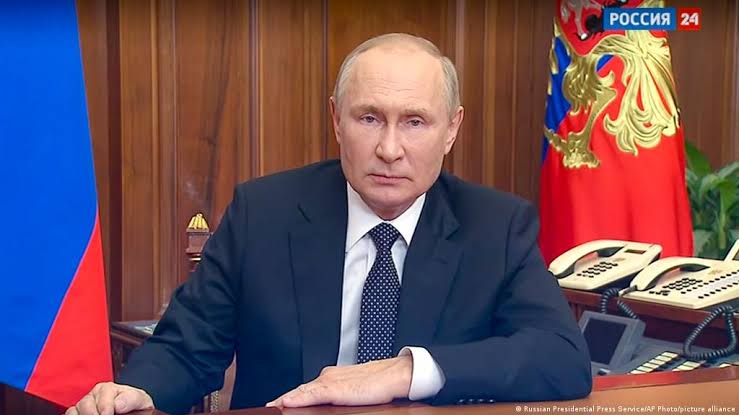
After suffering substantial setbacks on the battlefield and coming under increasing pressure to act, Russian President Vladimir Putin announced the partial activation of military reservists on Wednesday.
Putin occurred to terrorize nuclear retribution if Kyiv continues its efforts to recapture that territory while supporting plans for Russia to take occupied territories in southern and eastern Ukraine.
What is mobilization?
In the case of foreign aggression or an assault on Russia, Russian legislation permits mobilization in order to prepare the Russian economy and armed forces for war. It entails specifically using Russia’s military reserves.
Since the Nazi invasion of the Soviet Union in 1941, Russia has not been militarized before.
The Kremlin has not yet implemented any steps typically associated with wartime because Russia has always referred to its invasion of Ukraine as a “special military operation.” However, Wednesday’s disclosure modifies that.
Partial mobilization calls for protests
A hugely unpopular decision by Russian President Vladimir Putin on Wednesday to partially mobilize reserve troops to support his forces in Ukraine provoked rare protests across the nation and resulted in almost 1,200 arrests.
Right after seven months after Putin’s military raided Ukraine, they suffered terrible losses that led to the hazardous order. The fact that this was the first such call-up in Russia since World War II aggravated relations with the Western allies of Ukraine, who mocked it as a sign of weakness and desperation.
Vladimir Putin’s address to Russians
In his 14-minute, nationally aired speech, Putin also issued a warning to the West, ostensibly in regard to his nuclear arsenal: “I’m not bluffing about utilizing everything at my disposal to safeguard Russia.” He has earlier denounced NATO countries for sending arms to Ukraine.
After President Vladimir Putin ordered a partial mobilization of military reservists for the war in Ukraine, many Russians hurried to book one-way tickets out of the nation.
The initial mobilization of reservists with relevant combat and service experience is expected to involve 300,000, according to Russian Defense Minister Sergei Shoigu in a televised interview.
A rise in the price of tickets
Prices for tickets surged amid what appeared to be worried that Putin may call for a nationwide mobilization or that Russia’s borders might soon close.
In addition to stating that he had ordered an increase in funding to boost Russia’s weapons production, Putin stated that “mobilization events” would start on Wednesday. This was the first time since the conflict’s start in late February that he had provided any additional information.
A partial mobilization is an ambiguous opinion, but it would need enormous wartime subsidies from Russian corporations and citizens. Despite raiding Ukraine in February and naming it a “special military operation,” Russia has not yet announced war.
Putin reiterated that there would be no general conscription of Russian men of fighting age despite his confirmation that military reservists will be called up for active duty.
Ukraine to stick to recapturing terrorized states
The lower house of parliament, which is controlled by the Kremlin, voted on Tuesday to toughen the laws against Russian troops deserting, surrendering, and looting in preparation for a prolonged and perhaps intensified combat. Further, legislators authorized the foreword of probable 10-year prison periods for troopers who decline from the battle.
The law would give chiefs more capability to combat accounts of low soldier morale if the upper chamber authorizes it as anticipated and Putin cues it into law.
The biggest nuclear power station in Europe proceeded to be fired on near the city of Enerhodar, which is under Russian supervision. Russian bombing at the Zaporizhzhia nuclear power station once more caused infrastructure deterioration, as reported by Ukrainian energy operator Energoatom, and shortly needed workers to start up two diesel to deliver backup power to one of the reactor’s cooling pumps.